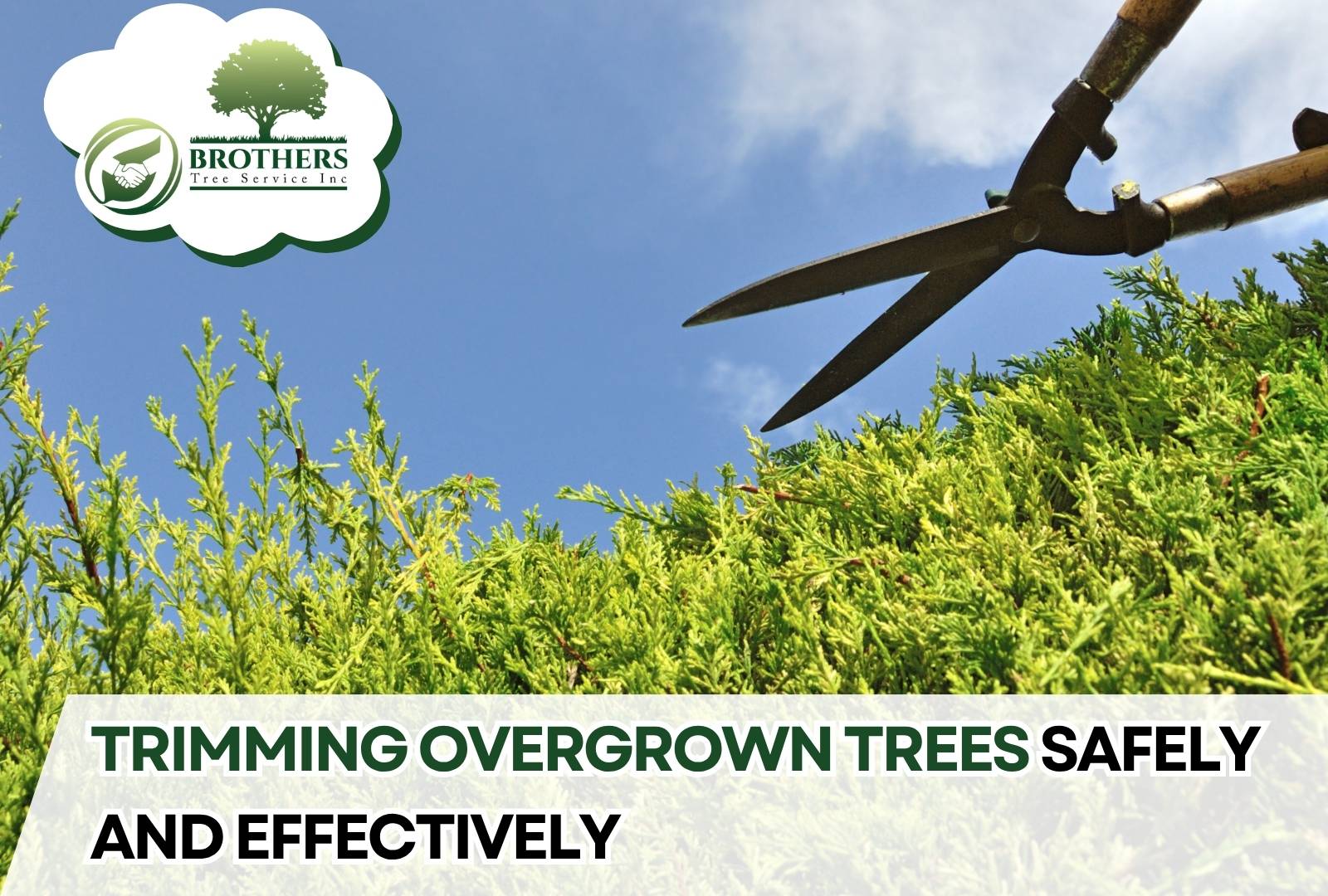
When trees grow too large, they can block sunlight, damage property, or become safety hazards. Trimming overgrown trees the right way helps bring balance back to your yard while supporting healthy long-term growth.
At Brother’s Tree Service INC, we guide homeowners through proven methods to manage tree size without harming the structure. This step-by-step guide will show you how to trim a tree that’s gotten out of control—and restore order naturally.
Why Overgrown Trees Need Attention
Prevent Hazards and Structural Damage
Overgrown trees often have limbs that hang over roofs, fences, or power lines. These branches can snap during storms or become a fire risk. By trimming early, you prevent accidents and protect your property from damage.
Still wondering if it’s time? Our full tree trimming guide explains when and why regular maintenance matters.
Encourage Healthy Canopy Growth
Thinning out an overgrown tree improves air circulation and allows more light to reach lower branches and nearby plants. This results in stronger trees, fewer pests, and better all-around yard health.
Read more about the importance of trimming and its impact on long-term tree performance.
Best Time to Trim Overgrown Trees
Trimming should be done when the tree is dormant—typically in late winter or early spring. This gives the tree time to heal before new growth begins. However, in urgent cases (like storm damage), trimming may be done year-round.
For season-specific insights, check out our guide on the best time for tree trimming in San Diego.
How to Trim a Tree That’s Overgrown
Step 1: Evaluate the Tree’s Shape
Step back and look at the overall structure. Identify branches that are:
- Crossing or rubbing
- Dead or diseased
- Blocking light or growing too close to structures
Mark these first to plan your cuts before starting.
Step 2: Use Proper Tools and Techniques
Use sharp bypass pruners or a pruning saw, depending on the branch size. Cut just outside the branch collar—never flush with the trunk. This protects the tree’s healing process.
For more cutting tips, visit our guide on tree trimming techniques.
Step 3: Trim in Stages
Avoid removing too much at once. Large trees may need several sessions spaced out over time to prevent stress. Limit removal to no more than 25% of the canopy per season.
Common Mistakes to Avoid
Trimming too aggressively or at the wrong time can cause long-term damage. Also avoid:
- Topping the tree
- Cutting into the trunk
- Leaving long stubs
These mistakes weaken structure and leave trees vulnerable to disease.
FAQs – Trimming Overgrown Trees
How much can I safely trim from an overgrown tree?
It’s best to remove no more than one-fourth of the canopy at a time. Spread major pruning over a few years if needed.
Do I need special tools for trimming large branches?
Yes. Use loppers for medium limbs and a pruning saw for larger ones. Always use clean, sharp tools to avoid tearing bark.
Can I trim a tall tree on my own?
Only if the branches are safely within reach. For anything beyond ladder height, it’s best to call a professional tree service.
Let Us Help You Trim With Confidence
Trimming overgrown trees takes care and planning. Whether you want to do it yourself or leave it to the pros, Brother’s Tree Service INC is ready to help. We provide safe, reliable trimming services that protect your trees and keep your yard looking its best.
Ready to regain control? Start with our tree trimming guide or contact us for expert support.
